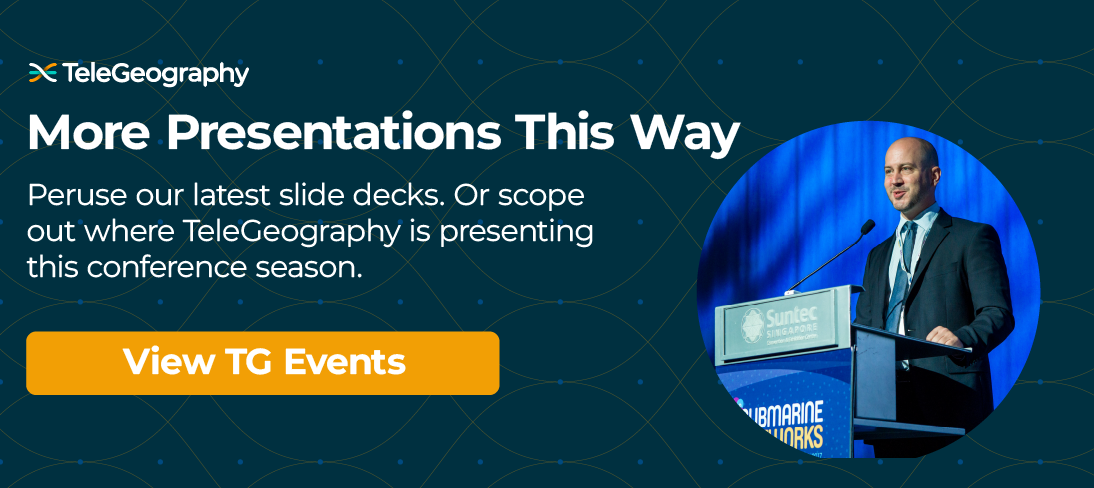This just in: a laser-powered chip may have broken a world record by transmitting a dizzying amount of data through a fiber optic cable in one second.
Somebody call Guinness—or just keep reading to learn more.
Our October list of telecom reading recs also covers NFL coach-to-coach communications, Starlink service for moving vehicles, data center sector uncertainty, and more.
This chip transmits an internet’s worth of data every second
The Washington Post describes how scientists from universities in Sweden and Denmark have “achieved lightning-fast data transfer speeds of 1.84 petabytes a second using the single laser-powered chip.”
Although the chip design is still in the research phase, it could mean a very speedy future for broadband.
You'll find more details in the article linked above—including an explanation of how the chip works using a “frequency comb.”
NFL coaches using private 3.5GHz CBRS network
If you've been keeping an eye on your Fantasy Football lineup, here's a sports-telecom mashup you might like.
“In recent FCC filings, the National Football League (NFL) said it expects to continue using an in-stadium, coach-to-coach communications system running in the newly released 3.5GHz CBRS spectrum band.”
Check out this Light Reading piece to find out why this is so noteworthy.
SpaceX's Starlink will expand internet service to moving RVs, trucks, and cars for $135/month
When we last mentioned Starlink's Portability feature—which appeals to vanlifers, RVers, and long-haul truckers by providing connectivity to many locations not covered by 5G—the service was unable to support moving vehicles.
That's no longer the case, according to this Business Insider article.
The Data Center Sector: An Uncertain Juncture
There’s a remarkable sense of uncertainty in the data center sector right now.
Some of the biggest global markets have seen unprecedented disruption to data center development as regulators and utility companies attempt to work through critical issues surrounding the long-term sustainability of the industry.
At the same time, the war in Ukraine has fueled tremendous volatility in European wholesale power prices, bringing further stress to an industry that’s fundamentally dependent on vast amounts of power. Senior Research Manager Jon Hjembo unpacks the current situation.
Cutting off Europe? A Look at How the Continent Connects to the World
With the recent damage to the Nord Stream gas pipeline, there's been lots of talk about the potential risk to submarine telecommunications cables in Europe.
This incident has led to speculation about whether it would be possible to somehow “cut off” Europe from the rest of the world. So Research Director Alan Mauldin is here to explain exactly how the continent connects to the rest of the world.
Think you’ve got something that should be on our monthly reading list? Tweet it to us @TeleGeography.
Jon Hjembo
Senior Research Manager Jonathan Hjembo joined TeleGeography in 2009 and heads the company’s data center research, tracking capacity development and pricing trends in key global markets. He also specializes in research on international transport and internet infrastructure development, with a particular focus on Eastern Europe, and he maintains the dataset for TeleGeography’s website, internetexchangemap.com.
Alan Mauldin
Alan Mauldin is a Research Director at TeleGeography. He manages the company’s infrastructure research group, focusing primarily on submarine cables, terrestrial networks, international Internet infrastructure, and bandwidth demand modeling. He also advises clients with due diligence analysis, feasibility studies, and business plan development for projects around the world. Alan speaks frequently about the global network industry at a wide range of conferences, including PTC, Submarine Networks World, and SubOptic.



